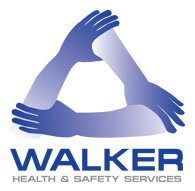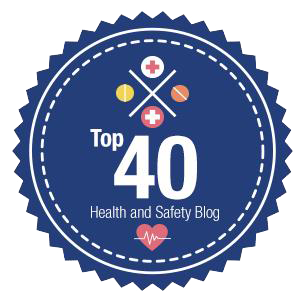
Keeping home-based vulnerable workers safe
Due to Covid-19 and the various lockdowns, many more workers than previously are either entirely or partly home-based.
Employers must be particularly careful and take extra steps for anyone in their workforce who is vulnerable to coronavirus (Covid-19).
When infection rates are particularly high and the country is in a national lockdown, vulnerable workers are advised to work from home if at all possible and not to go to work even if they cannot work from home, i.e. to “shield”. So, if you can support your vulnerable workers in homeworking, what are some of the particular issues to consider?
What is a vulnerable worker?
To summarise, these are the broad categories.
Clinically extremely vulnerable individuals are those people with specific underlying health conditions that increase the risk of severe illness if they contract Covid-19. A full list of groups falling into this category can be found on GOV.UK.
Clinically vulnerable individuals include those over the age of 70 years and those with certain defined underlying health problems, eg diabetes. Pregnant women are considered to be clinically vulnerable under this definition.
In addition to vulnerable workers, the GOV.UK website also refers to higher-risk groups of employees and these include:
•those with a high body mass index (BMI), ie who are obese
•those who from some Black, Asian or minority ethnicity (BAME) backgrounds
•those with certain health conditions not included under the vulnerable categories
•older males.
While there are currently no official expectations of additional controls for these higher risk workers, it is worth factoring them into the organisation’s risk assessments, especially if the organisation’s own HR policies have a wider definition of what is a vulnerable worker.
Homeworking for vulnerable workers
There are four key areas to consider when looking at homeworking for vulnerable workers.
1.Risk assessment.
2.Understand the worker.
3.Understand the home working environment.
4.Understand internal communication and supervision.
Do not assume your organisation’s current homeworking risk assessments for vulnerable workers are undertaken and are up to date.
This will be especially true in comparatively low-risk environments such as offices where additional adjustments such as display screen equipment may have been put in place for individual vulnerable workers. In other words, controls may have been applied piecemeal but not necessarily with a risk assessment to define them.
Conversely, has your risk assessment for home-based working actually considered vulnerable workers? If not, then adequate controls may not necessarily have been defined and, so, put into place.
Ensure that your homeworking risk assessment covers the specific requirements of vulnerable workers.
Understand the worker
In making adjustments for vulnerable workers at home, your organisation is not simply meeting legal requirements, it is encouraging better productivity, less staff sickness absence and positive staff relationships.
Understanding the vulnerable worker and seeking their input is key to effective management. For example, an employee who is 70 years of age or older (one of the definitions of a vulnerable worker) might not necessarily have the IT skills to work confidently on their own at home, whereas in the workplace environment where everything has been set up for them and there is on-call IT support they have no particular issue. Another example might be if they are diabetic; some (but not all) individuals suffer periods of depression or anxiety as a side effect of their condition. As such, working on their own from home may not necessarily be a positive environment without regular managerial support and supervision.
Just because an employee is not a vulnerable worker in terms of the definitions currently given by the four nations in the UK, this does not mean that there are not medical or other issues that need to be taken into account with their home-based working needs.
Understand the homeworking environment
Risk assessments often look at what a typical home environment might entail. However, the individual circumstances of a vulnerable worker need to be understood.
For example, the risk of musculoskeletal disorders (MSDs) may be higher for some vulnerable workers, depending on their condition. This would require specific provision from the employer, eg adapting workstations to be used at home, specific chairs, footstools or, perhaps, enhanced technologies such as lighter laptops and better peripherals appropriate to their particular needs.
For some vulnerable workers, fire safety may be a greater consideration, eg if their vulnerable status is due to a heart condition or serious respiratory illness, then home evacuation might not be as straightforward as for other workers. Discussing the issue with the worker so that they can take steps to improve their own fire safety — moving their office to ground floor level, for example — might be sufficient. If electrical safety is a concern, an employer could provide the optimum items to minimise fire risks within the home’s existing electrical infrastructure. Risks might arise due, for example, to “daisy-chaining“ in the home (multiple extension leads) and/or using incorrect or counterfeit or chargers for electrical devices,
Other controls to consider might include providing an appropriate fire extinguisher and verifying the worker has an appropriate smoke detector in their home.
Understand internal communication and supervision
Discussions between the worker and their manager around their specific concerns is particularly important. Isolation, lack of team involvement and even lack of support from supervisors is a risk for all workers and especially so for some vulnerable workers.
It should be remembered that some managers and supervisors might be vulnerable workers themselves, so the communication processes should be designed to minimise stress, maximise productivity and encourage two-way communication. This is easy to say but an issue that needs to be given visible support by senior management. The risk assessment process should have identified all vulnerable workers and the support available to them should be made clear to their line management.
Review
It is strongly recommend that the risks and controls are regularly reviewed, for all workers. One approach is to consider the following questions.
- Stop: what is not working?
- Start: what could be improved and could be implemented?
- Continue: What is working well and can continue?
- Change: What is working to a degree, but could be modified slightly to work better?
Often problems with work-life balance or issues with connectivity can be resolved through reasonable adjustments by the employer and supervisors should be empowered to resolve matters quickly.
Contact us for further information.










